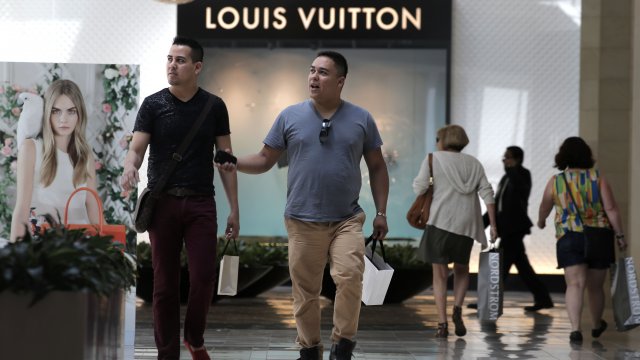They're ingrained in our culture: From classic movies to retro board games, shopping malls have a storied history. But their future is in doubt, as the hustle and bustle of the mall turns to desolate decay.
In 2020, Coresight Research estimated a quarter of America's roughly 1,000 malls at the time would close in the next three to five years. And in a 2022 interview, Nick Egelanian — the president of retail consulting firm Siteworks — told the Wall Street Journal, "10 years from now, there will be approximately 150 malls left in the U.S."
That's an average of three malls per state.
One challenge is brick and mortar being replaced by clicking and confirming purchases, and 2020 further exacerbated the problem, with malls forced to close doors during the height of the pandemic.
"2020 was obviously a terrible year from a bankruptcy perspective for lots of retailers," said Natalie Kotlyar, national practice leader of retail and consumer products for advisory firm BDOUS.
Kotlyar says 2023 is already getting off to a rocky start for some mall-dependent retailers.
"I think going into 2023, we're going to see some stores that didn't plan properly are gonna go into bankruptcy," Kotlyar said. "We've seen some already announcing that their having challenges."
Macy's is among the retailers having problems, and in January, it announced the closing of stores in four states — all of them located in malls. And those retailers are the lifeblood of the industry.
"Anchor stores," as they are known, are supposed to be drivers of foot traffic, bringing in shoppers through retailers like Kohl's to navigate them to smaller, specialized stores. No anchor stores means empty, and possibly dead, malls.
Sears, Kmart, Macy's and Bloomingdales are among the anchor stores that are leaving or have already left. And JCPenney is still recovering from its bankruptcy filing in May of 2020.
"I think a lot of the malls that had those stores that did file for bankruptcy have seen a significant deterioration in foot traffic," Kotlyar said.
So how can malls that are struggling to survive turn it around and thrive?
"Those that are gonna thrive are the ones that truly understand their customer base," Kotlyar said. "They understand how to approach their customer. They understand whether it's through a social media perspective, whether it's through email, how do they connect with their consumer?"
Kohl's began accepting Amazon returns as part of a partnership in 2019. The company said foot traffic increased in the first three weeks after launch by 24%, yet rising operating costs have kept the store on shaky ground.
JCPenney has integrated a beauty store within their stores, looking to bridge the gap between e-commerce for cosmetics shopping and a face-to-face experience for things like makeup. The company reported slight growth in 2022.
As for malls as a whole, many are looking at attraction-based experiences to bring in customers — like the Village at West Oaks Mall in Houston, home to the Seismique immersive museum.
Some mall owners are taking matters into their own hands. Simon Property Group — owner of dozens of malls across the country — now owns Brooks Brothers, Lucky Brand Jeans and JCPenney.
"I think more owners are looking to invest in their stores to make sure that their malls stay afloat, that their retailers are present," Kotlyar said.
Just how much of an effect these adjustments make remains to be seen, but Kotlyar thinks malls have an infrastructure and a social advantage over e-commerce.
"There's multiple stores, multiple categories and you also have more of a selection," Kotlyar said. "If a store doesn't have what you want, you don't have to get into the car and go over to store B. And I think that going to the mall continues to be a social event. We're seeing a lot more of the younger generation going back to the malls and just hanging out at the mall."
Nostalgia-based shows like "Stranger Things" are adding a glimmer of hope for malls looking to spark a relationship with a new generation.
For now, that has malls and retailers buying in.



